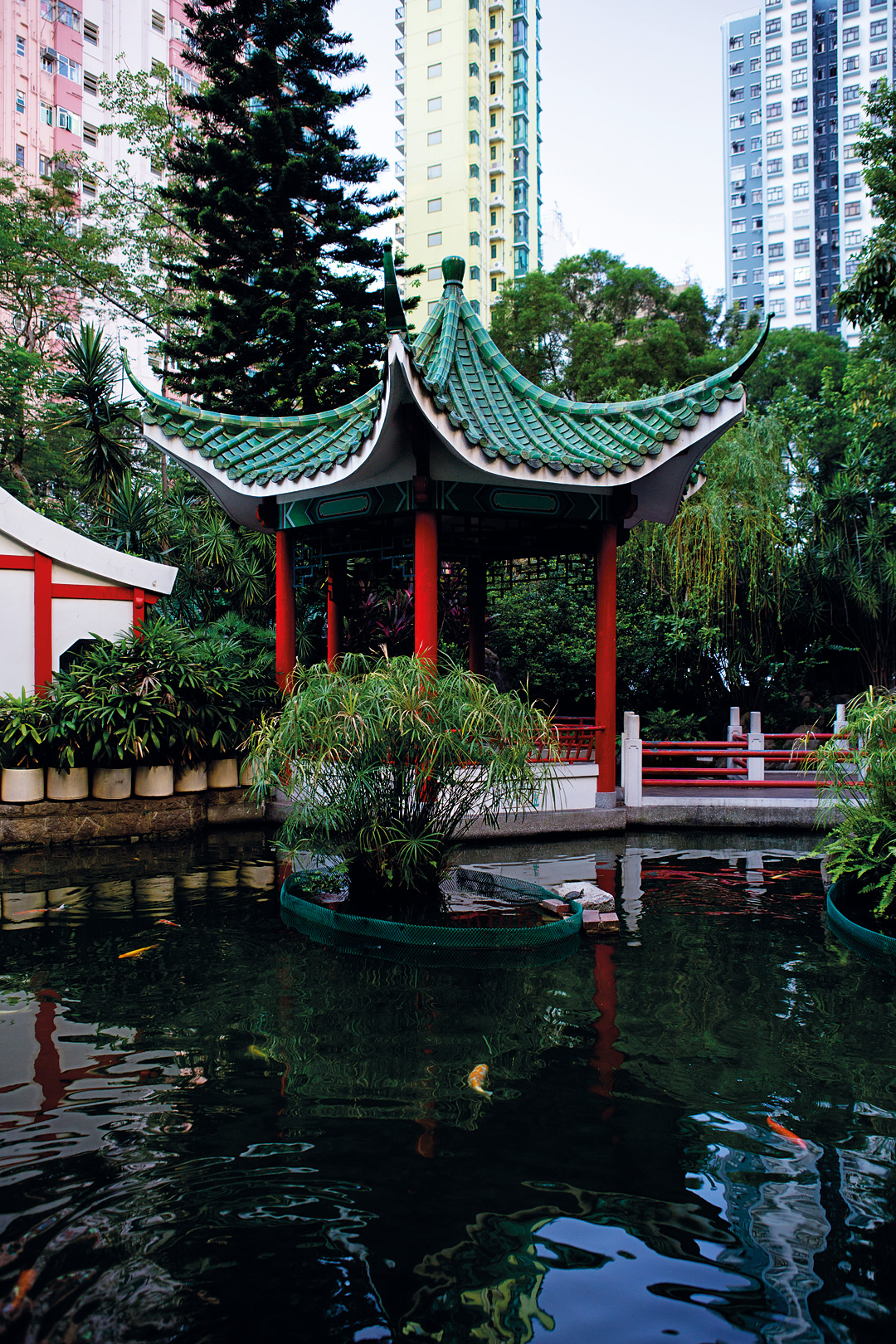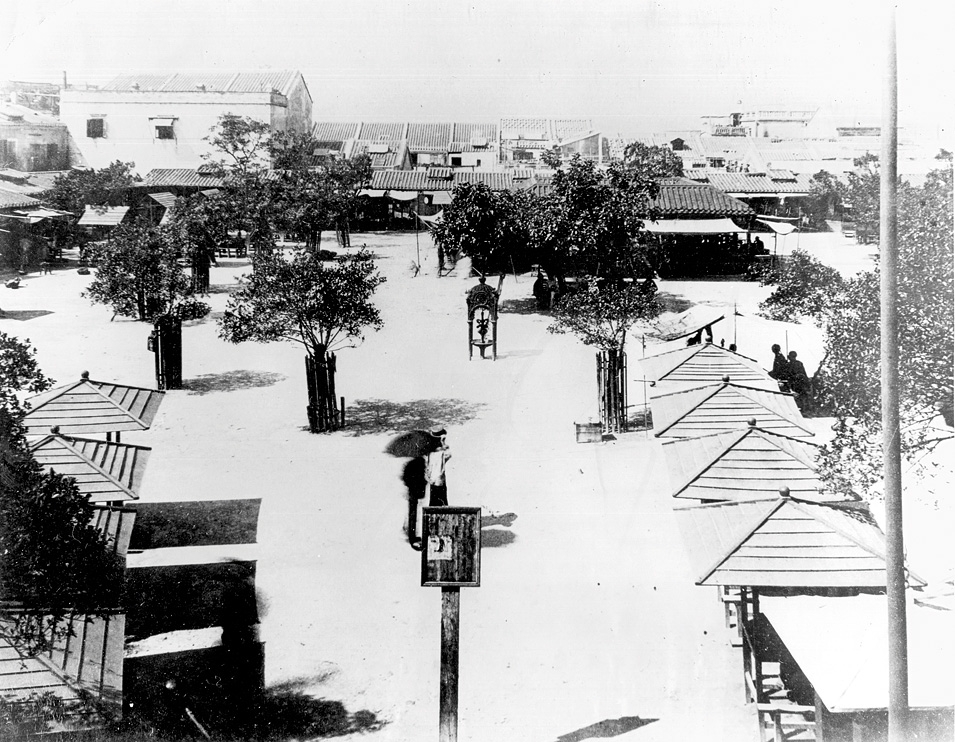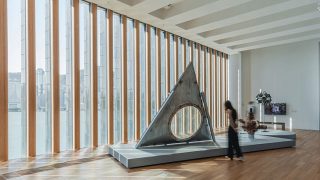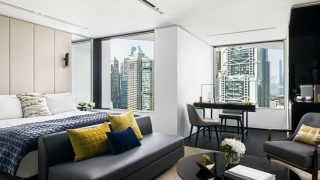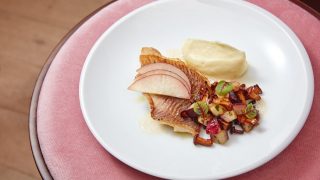Hollywood Road was one of the first streets built in Hong Kong; construction started in 1844. Its path—from the former waterfront at Queens Road, continuing as Wyndham and Lower Albert Road to the Victoria Barracks—was chosen to facilitate the movement of troops. Along it were built three- to four-story buildings, many of which are still standing, albeit in revamped form; in photographs from the time, bedraggled sheets and shirts hang on European-style balconies adorned with ornate Chinese balustrades. At street level, open-fronted barbershops, fortune-tellers, pawn dealers, and coffin shops spilled out onto the pavement.
When the British administration got organized, they flattened the barren hill where Bremer and his crew drank a toast under the flag, and set aside the land as an open space.
Tai Tat Tei (literally “big piece of land”) was decorated with manicured trees and small gazebos. Sir Henry Pottinger, Hong Kong’s first governor, designated the surrounding area as a Chinese-only residential zone. He laid out a grid of 12 narrow streets and divided them into miniscule lots to accommodate the many and unexpected numbers of Chinese arriving from the mainland. With great optimism, he named the precinct Tai Ping Shan—“hill of peace and safety.” It was anything but. The area gained a reputation for seediness, debauchery, and squalor. The British avoided it, but the plague did not. In 1894, an outbreak festered in the city, thriving in Tai Ping Shan, which was as packed and funky as a can of sardines. More than 200,000 people were stuffed into an area the size of seven football fields with no drainage. Tai Ping Shan suffered the most plague casualties in all of Hong Kong; a plaque in nearby Blake Garden now commemorates the dead. The following year, the British government razed and rebuilt the entire district in an attempt to improve sanitation.
In 1897, a 40-year curfew on Tai Ping Shan was lifted. Sitting at the navel of Hong Kong’s underbelly, Tai Tat Tei flourished as a night market. It was the place to go for hot food, hot fun, and hot sex. The British would come to referred to it as the “poor man’s nightclub,” and most of them were too scared to set foot near it. But they were missing out. Hong Kong’s working class feasted on cheap food in the warm light of dangling globes rigged up to hawker stalls and food carts. A packet of preserved olives cost just a few cents. Steaming bowls of chap sui—“mixed bits”—was an inexpensive favorite among locals, who came for dinner and stayed for the entertainment. Soothsayers read the future to young singles hoping for love. Storytellers, magicians, and acrobats competed for the attention of audiences. Cantonese chanteuse Lee Yin-Ping sung “Pretty boy, pretty boy, you make my thoughts wander in joy” to giggling girls.
Crazed fans watched kung fu masters’ kicks and contortions. A department store– range of wares was offered on peddlers’ make-shift tables. Mah-jongg tiles clinked long into the night. The later the hour, the more fun there was to be had. Around the corner on Queens Road, the Ko Shing Theatre showed Cantonese opera and Chinese films to packed audiences crammed into stiff seats. In later years, American troops on break from Vietnam became regulars at the Tai Tat Tei, but not for long. The government repossessed the land in 1972, clearing it out by 1978. In 1992, the site was converted into a Chinese garden and named Hollywood Road Park. The Tai Tat Tei’s regulars keep coming, though—the majority of visitors are people of that generation. But the place has changed. Today, when dark falls, the park empties out.
**
It’s late at night now; quieter, calmer. The park feels still, as if at rest. The roar of traffic is reduced to a gentle background hum and the small fountain’s flow is clearly audible. In the water, the carp swim slower, deeper, weighed down by the day’s fill. The playground is bathed in light, but all the children are in bed. And the old men, too: their pavilion is brightly lit, but empty.
Now and then, a runner pants in through the front entrance and out the back. A middle-aged man is deep in discussion on his mobile phone. As he talks, he circumambulates the park, carrying his conversation to its farthest corners on a well-worn circuit that takes him five minutes flat. In one corner, five young men dressed in black and white have taken over an open space near the lotus pavilion. They are under the spotlight of blazing lamps, break-dancing in front of an audience of backpacks on a long bench. A small boom box is their soundtrack, volume down low. Ten hulking biceps push at ten T-shirt sleeves. Headstands and handstands pull their T-shirts down, revealing the toned trunk holding them upside-down for three, four, five seconds. Each tumble, twist, and contortion is powered by stored energy pushed from the ground. But this is not the performance, just a rehearsal. Each man inhabits his own world of movement. From time to time one stops to watch another; from time to time they rest. When they leave the park they will pass a signpost that encapsulates the area’s rich history. South to Tai Ping Shan, east to Possession Street, and west to Queens Road.
This article originally appeared in the August/September 2013 issue of DestinAsian (“Dispatches: Hong Kong”)

